While much has been looked at in terms of video games and their psychological effect on players,1 little has been explored about the psychological implications of tabletop RPGs.2 There have been few examinations of how tabletop RPGs use the unique features of their medium to work with trauma. For the purposes of this study, I will be analyzing the 5th edition Dungeons and Dragons module “Curse of Strahd”, which was released in 2016, in terms of how the game mechanics and narrative theme of the module reiterate key characteristics of psychological abuse, which the players are able to witness and engage with throughout the campaign. The setting, narrative elements, and unusual game mechanics combine in a rich tapestry of horror that allow the player to experience the manifestations of trauma through play.3 While Dungeons and Dragons has previously been criticized for its lack of diversity and sensitivity to otherness,4 “Curse of Strahd” works to present trauma and its effects in a meaningful way that allows players to critically engage with and reflect upon trauma. Unlike the typical hack and slash dungeon crawls from the 1980s, “Curse of Strahd” focuses on the psychological implications of physical violence. I argue that “Curse of Strahd” is a site for witnessing and performing the psychology of trauma, and specifically the psychology of abuse.
In her foundational work on trauma studies, Cathy Caruth suggests that “trauma is not locatable in the simple violent or original event in an individual’s past, but rather in the very way that its unassimilated nature – the way it was precisely not known in the first instance – returns to haunt the survivor later on.”5 Trauma then is a cycle, a repetition in which a victim not only experiences an initial stressful event, but then must re-experience it in new forms, echoes of the original event. Literary trauma studies explores ways in which the narrative can evoke this feeling of repetitive traumatic memory through innovative uses of flashback, elision, or other rhetorical devices. In her study on how video games virtually allow players to experience trauma, Tobi Smethurst focuses on the role of player agency as a key to involving the players emotionally in complicity and guilt of the traumatic experience. Her detailed reading of how the narrative elements illustrate traumatic symptomatology provides a framework for my own exploration of “Curse of Strahd”, but whereas she focuses on the player’s emotional unsettlement while playing, my analysis focuses on the game components themselves. Moreover, it is my contention that “Curse of Strahd” specifically posits players into experiencing a specific kind of trauma: abuse. Few would disagree that abuse, whether physical, psychological or sexual, is a kind of traumatic event, one that disturbs and distresses its victim in unspeakable ways. Indeed, “abuse is about a dynamic of extremes, domination and submission,”6 an experience that can imbed victims into a state of isolation and terror. In exploring how “Curse of Strahd” evokes elements of psychological abuse for the players to experience, it is important to establish: how the narrative elements reflect traumatic symptomatology; how the thematic underpinnings of the game further concretize the abuse that is depicted; and how the very mechanics of the game provide players with a space to experience the cycle of abuse and relive traumatic memory through repetition.
Setting the Traumatic Stage
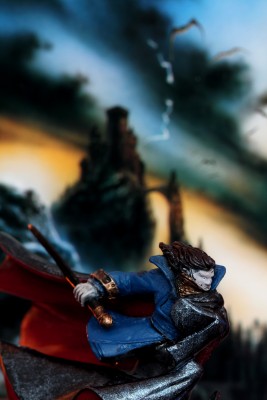
“Curse of Strahd”, the latest in a long line of revisions of the Gothic horror setting, eschews the typical sword and sorcery fantasy and instead revolves around a powerful vampire, Strahd von Zarovich. Strahd plagues the land of Barovia, a demi-plane cast away from its original universe upon the completion of his fatal pact with the Dark Powers. Through interactive roleplaying and randomization of key elements of the module, “Curse of Strahd” involves the players in not only witnessing, but experiencing trauma. The game forces players to face some subset of the many atrocities committed by or brought upon by Strahd. Players encounter the many victims of Strahd: a dead burgomaster and his adopted daughter, Ireena, who must flee Strahd’s vampiric attentions; a mad abbot who creates flesh golem brides for Strahd as an attempt to appease him; dead-eyed villagers who gather in churches at night to stay safe from roving wolves, Strahd’s spies; a dusk elf who stoned his own sister to save her from Strahd’s unwanted advances. The unique game mechanics present within reiterate and actualize the psychological trauma that is being role-played as players face the vampire, a Bluebeard archetypal figure, who is both a physical and psychological predator. What makes the adventure particularly unique is the card reading mechanic, the Tarokka Deck, which randomizes elements of the “Curse of Strahd” module. These cards are a tactile and functional component that allow for replayability, an unusual feature for an RPG campaign. Beyond this, though, they also mimic the characters’ psychology and allow the players to live and perform the psychological aspects of traumatic memory, of the abuse thematically woven into the narrative itself. The Tarokka Deck incorporates an inconsistency in the game play that reflects fragmented traumatic memory and reifies the inconsistency present within an abusive relationship.
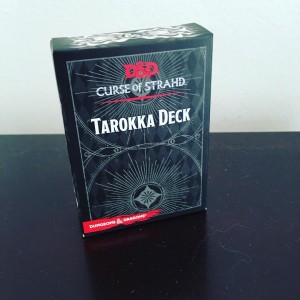
As the players set foot in Barovia, having been magically transported there through one of several different “adventure hooks”7, they can immediately sense the change in the setting around them, signaled firstly by a strange fog. Key markers of trauma are “feelings of disembeddedness, isolation”8, a “sense of alienation and unreality”9 that overwhelm the individual. “Curse of Strahd” imbues its players with aspects of traumatic experience through the very setting of the game; the location itself adds to the alienating quality of the adventure. Barovia is described as existing on a “demi-plane formed by Strahd’s consciousness” from which “no creature can leave without Strahd’s permission.”10 A deadly mist envelopes Barovia that overpowers players and forces them to move as Strahd sees fit. The fog as well as the “gray pall” and “deathly stillness”11 of the land bespeak of the gestalt of psychological trauma. While serving to control the characters’ movement, the fog is at its core disorienting, both physically and mentally. Characters who try to travel in the fog become lost and ultimately return unwittingly to Barovia, a thematic consequence, and gain a level of exhaustion, a ludologic consequence. If they continue to gain levels of exhaustion, ignoring their own health in order to try to escape, the players will ultimately perish in the mists.
Barovian NPCs are visually portrayed in the book in washed-out greys and purples, hues that suggest “emotional numbing.”12 They are viewed as living in a “culture of fear” in which they are ever plagued by “the Devil Strahd,” who periodically preys and feeds upon them13 Throughout the realm, there is a fierce sense of isolation as characters, both player characters and non-player characters alike, are trapped within the demi-plane, seemingly permanently. In this sense, all the characters, including Strahd himself, can be viewed as “sufferers of trauma” who “are often described as being trapped in limbo,”14 forcibly removed from their normal existence.
Moreover, a lack of sunshine, while a key thematic plot point for the vampire’s survival, also serves to reiterate the melancholic backdrop and disorient the players’ innate sense of time. A significant consequence of trauma is an altering of the victim’s perception of time; “ordinary linearity and unity of our experience of time” is disrupted by trauma.15 Without sunshine as a key time-tracking element, players are forced to rely upon other means to signal the passage of time within Barovia. Further adding to that disorientation is the knowledge that the players have been abandoned from anything familiar or real. Some characters may even begin to question the very reality they live in as they witness their own bodies dead before them, hanging from a gallows or sprawled out in the woods eaten at by wolves: manipulative illusions of the ever-pressing fog – a deceit of Strahd. This alienating effect, based upon the physical environment as well as the psychological manifestations, traumatizes characters, and gives players insight into the traumatic nature of Strahd.

The non-linear nature of the adventure also emphasizes the chaotic, traumatizing nature of Strahd and the land of Barovia. Like most sandbox modules, player characters may wander into areas they are ill-prepared for and risk death. Characters may feel overwhelmed by the open world before them in which they must make a clear path for themselves through trial and error exploring, traveling that may lead players to their early and unfortunate demise. Indeed, as noted on many RPG forums, “Curse of Strahd” is viewed as a particularly deadly module, but here death reflects the paradigm of trauma symptomatology. The ludology of death and resurrection is altered in “Curse of Strahd” as a means of reiterating the traumatic quality of the Gothic setting for the player characters.16 If a player character dies, her soul is trapped within the mist; souls cannot pass on to an afterlife if it dies in Barovia. Even death then cannot allow characters to escape the oppressive realm. Should a player character die and be resurrected after being dead at least a day, the character “gains a random form of indefinite madness brought on by the realization that its spirit is trapped in Barovia.”1718The indefinite madness table and the realization that player characters’ souls are trapped reiterate the “randomness and meaninglessness of […] death,” another symptom of trauma,19 particularly as this madness attribute is determined randomly by the roll of a d100. The madness thematically reiterates the horror narrative, but also forces the player to adhere ludologically to a restricting condition, one that, upon each iteration of the role play of the attribute, causes the player to relive and re-experience her traumatic event. The character’s death then is marked on the mind, and the character sheet, of the player.
Like many, if not all, RPG modules, “Curse of Strahd” incorporates tables in order to help a Dungeon Master easily create random encounters for the players. For “Curse of Strahd”, however, these random encounters are not utilized in order for PCs to have opportunities for gaining experience points by verbing X nouns (e.g. killing twenty zombies; finding three gems). Unlike many modules, this particular one recommends leveling up based on milestone leveling rather than gaining experience points for defeating enemies. Instead, these random encounters function mainly to keep the anxiety level of player characters high. Player characters are encouraged to be hyper-vigilant to any potential dangers in the realm as a way to keep the players immersed in the Gothic nature of the narrative. As media scholar Maral Tajerian points out, “games that raise the player’s anxiety actually sensitize them to danger” (her emphasis). The random encounters of “Curse of Strahd” then “sensitize” players to danger and “creates an environment in which some of the symptoms of trauma, such as hypervigilance and oversensitivity to certain stimuli associated with the traumatic event, can be virtually experienced.”20 The mechanics of the adventure reinforce and reflect the experience of trauma for the players to engage with.
Strahd as Bluebeard: The Repetition of Trauma
The original module, “I6: Ravenloft”,21 was published in 1983 by game designers Tracy and Laura Hickman. The vampire Strahd von Zarovich was designed by this husband and wife team specifically to reinforce the cautionary tale against abusive relationships, a theme that early vampire literature, such as John Polidori’s “The Vampyre”, strove to convey. In an interview on the official Dungeons & Dragons podcast, Dragon Talk, Tracy Hickman commented on how he wanted to create a “cautionary and tragic tale” about “what a vampire actually is”: a predator.22 Insistent on showcasing the monster for who he is, rather than glamorizing him (à la the Twilight series) or exoticizing him, the Hickmans modeled Strahd on the Bluebeard archetype, a murderer and abuser of women. Moreover, in discussing their initial development of Strahd, they wanted their vampire to be consistent with the Polidorian vampire – that is: a Lord Byron-esque character, a “gentleman vampire”.23 “He doesn’t like women,” Hickman explains as he describes the original vampiric model, “he preys on them.”24
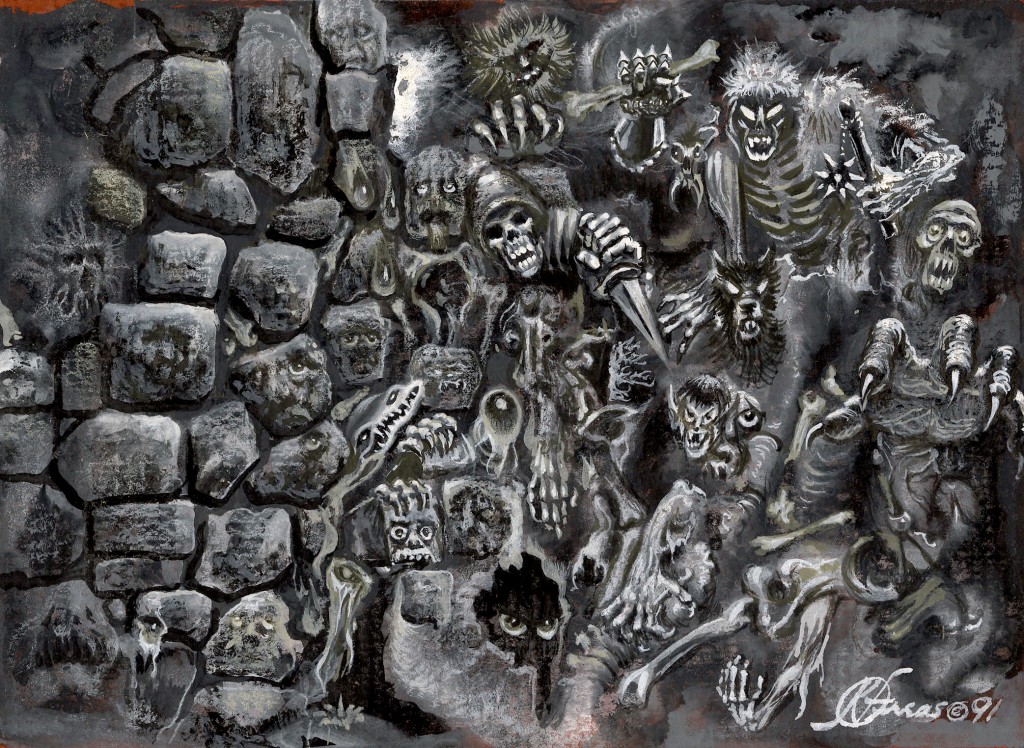
From the expanded background information provided in “Curse of Strahd” we discover that Strahd himself is a complicated figure: a brilliant military leader who fought off enemies to preserve his familial lands; a distant son who erected a castle and named it for his mother, who died before she could see it; a cold man who fell in love with a woman, Tatyana, only to have her prefer his own brother, Sergei, who was younger and protected from the atrocities of war; a murderer and a necromancer, a vampire who is ensnared by his own villainy. On the day of Tatyana and Sergei’s wedding, Strahd struck out and killed his brother, and tried to woo Tatyana. In response, she threw herself from the walls of Castle Ravenloft in order to escape the rapacious vampire. Since the vampire’s murdering rampage, Barovia has been cast away and Strahd has been enfettered to his curse, his own self-perpetuated and self-propagated trauma by seeing Tatyana reincarnated into new women over the centuries. Thus, like Bluebeard, the key to Strahd is the repetition of the act, the recapitulation of the atrocity. Just as Bluebeard continues to woo and marry women before slaughtering them and keeping their bodies as tokens, memorabilia to relive and remember their flaws, so too does Strahd collect his victims over the years in the inescapable realm of Barovia. Thematically there are numerous tragic and traumatic events that occur in the narrative backgrounds of many of the non-player characters. This was strategically and intentionally crafted by Chris Perkins, game designer for Wizards of the Coast and lead designer for this module, as a means of highlighting the widespread effect of Strahd’s violence on his land and his people so that increasingly as players continue their way through the region, they begin to realize their own fate may ultimately turn so bleak and dire: they too may become hopeless and lifeless, another gruesome and pathetic trophy in Strahd’s cabinet of horrors.
The adventure begins to eschew the standard RPG premise that all players are robust heroes who will ultimately defeat the great evil that stands before them or else die trying in a TPK, or total party kill. For as we know, death is not an escape for Barovians and has not been an escape for Strahd either. As the title of the revised campaign suggests, the curse belongs to Strahd; he suffers from and is controlled by it and he too can never find a release. Just as the characters spring with hope for an escape only to be let down, Strahd too feels this same kind of emotional overhaul. As Chris Perkins states: “Every time someone new comes into the realm, there’s the hope that they might change [things] and then the despair that follows inevitably that no, they really can’t. This guy [Strahd] is too badly ruined.”25 The campaign reinforces the idea that Strahd cannot be changed. Like an abusive partner, like Bluebeard himself, no amount of love or effort will “make him better”; there is no fixing Strahd. His own traumatic memory cannot be processed or worked through, only witnessed and played through by the player characters in the adventure.
Ultimately, Strahd continues to try to replay and revise his own tragedy. Throughout the “Curse of Strahd” adventure Strahd endeavors to recreate (and re-invent) his relationship with Tatyana by pursuing women who seem to be embodiments of Tatyana’s soul, her reincarnation. He is ““condemned to a repetition of the same set of pathological symptoms”26 as he attempts to achieve the unattainable, to re-live and retroactively bring back to life the one person he has ever (supposedly) loved. Thus he perpetuates the cycle of trauma and abuse on strangers, on NPCs, on victims who can never live up to Tatyana, the paragon of Strahd’s desire. As Gildersleeve suggests, fragments of traumatic memory continue to “interrupt[…] the present”27 in a performance of the past, as Strahd’s doomed obsession echoes through the centuries within the story and is repeated with each run-through of the module by different parties.
The Fortunes of Ravenloft
Throughout the module Curse of Strahd we see instances of “the unknown past interrupting the present,”28 a symptom of trauma. In order to most effectively create an immersive experience for players, the Curse of Strahd’s ludology mirrors and informs its own narrative. Just as Strahd continues to repeat his trauma, so too do the game mechanics endeavor to reproduce this experience for the players. Included in the adventure, both physically and thematically, is the Tarokka Deck: a tarot-like set of cards that Madam Eva, an elderly Vistani NPC, uses to tell the player-characters their fortunes. She prophetically foretells key elements to the adventure: the location of crucial artifacts (the Tome of Strahd, the Holy Symbol of Ravenkind, and the Sun Sword) that will help the party destroy Strahd; the identity of a powerful ally; and even the location of Strahd himself within the labyrinthian Castle Ravenloft. While these randomizations may seem minor, they provide for a renewed and refreshed playing experience each time a party may enter Barovia. Even though “two different gaming sessions result in two distinct narrative lines”29 in any campaign, these changes in fundamental aspects of the adventure point players to new places within the expanded game world. With these internal, arbitrary elements shifting within the game, there are numerous permutations within the single adventure. So replayability here does not constitute a complete Eternal Sunshine of the Spotless Mind mental wipe of the players’ knowledge of the module, but rather a re-creation of the initial scene – a do-over, a Groundhog Day in which characters learn and try a new approach – with the caveat that some of the components may be altered.
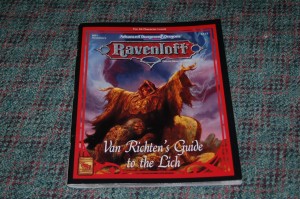
In the original “I6 Ravenloft” adventure, Strahd’s own goal was a random element, emphasizing his own chaotic nature: not even he knew precisely what he ultimately wanted to achieve until the adventure began. Ultimately in the revised version of “Curse of Strahd” the vampire’s goal becomes statically focused on three things, the main goal being to win Ireena Kolyana, who he believes to be another host for Tatyana’s soul. This revision limits his own randomness, but forces him to focus on the repetitive cycle of abuse, the principal element that situates him within the Bluebeard archetype, thus further condemning players to this traumatic cycle.
In looking at the Tarokka Deck mechanic in both the Ravenloft adventure and the “Curse of Strahd”, the effect of the ludology is a bit different though the mechanic itself is functionally the same. The randomization of elements in “Ravenloft” was designed specifically to provide “built in replay value.”30 Afterall, “Ravenloft” is only 32 pages long. By modern standards this is what we might call a one-shot adventure as it could have been played in a single sitting of several hours rather than many multiple-hour sessions that a typical full-length campaign requires. In comparison, at 256 pages “Curse of Strahd” is anything but a one-shot. So while the cards themselves are a holdover from the original “Ravenloft” module, they must work differently given the larger world and greatly extended play time. While they can provide players with the opportunity to replay the entire adventure, this is less likely to happen as an extended campaign as opposed to a one-shot experience. Potentially the hold-over of this game mechanic was done for nostalgic purposes; as Chris Perkins reminds us, if all the D&D nerds out there (myself included) ranked their favorite modules, “Ravenloft” would likely be near the top of the list.31 But as nostalgic as it may be, the cards themselves serve a more significant purpose: they reify both the theme and Gothic atmosphere, and reiterate the randomness and ubiquity of Strahd’s violence.
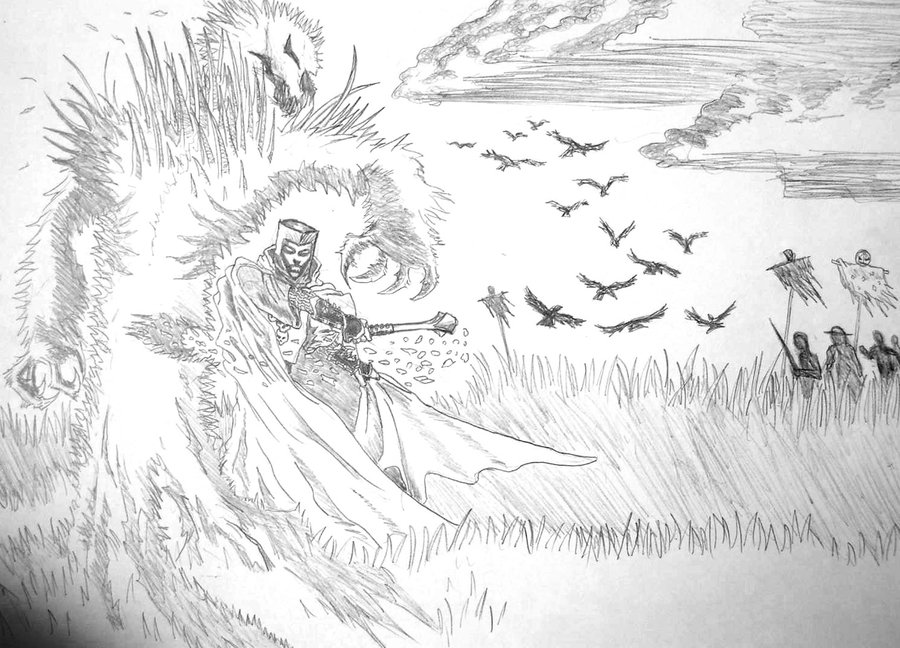
Players of “Strahd”, through their characters, witness and perform the psychology of trauma, and specifically of abuse. Abusive relationships are “driven by insecurity, fear that feeds that insecurity and an expectation of inconsistency, both real and perceived” (Formica). Not only does the narrative of “Curse of Strahd” illustrate this condition, the ludology of the module manifests it: players going into “Strahd”, even having played it before, have an expectation of inconsistency for the land, the people, and Strahd himself. Indeed, Strahd himself is an option for a random encounter in Castle Ravenloft (and was in the original gameplay as well), emphasizing his presence as an ever uncertainty, forever random and tyrannically abusive in his inconsistency. His presence is further randomized as his final location in Castle Ravenloft is ultimately produced by the arbitrary draw of the Tarokka Deck. Strahd is ubiquitous and ephemeral, appearing and lashing out at characters for he sees no other option, a characteristic of abuse (Formica). He is stuck and he knows it. He will never successfully escape the tragedy of his own making; and the players too must experience this through repeated trial. Each session for the players is an exercise in unfolding and unpacking Strahd’s trauma as the players witness and perform their own. Like the psychotherapeutic process, this experience progresses over multiple game sessions. The expanded world has done more than showcase the extent of Strahd’s corruption; it mires the player-characters into the fog and into the mind of Strahd and the Tarokka Deck provides them with a key to process through the trauma in different ways with each new play through.
–
Featured image “custom painted strahd von ravenloft” by Benny Mazur @Flickr CC BY.
–
Shelly Jones, PhD is an Assistant Professor of English at SUNY Delhi, where she teaches classes in mythology, literature, and rhetoric. She received her PhD in Comparative Literature from SUNY Binghamton. Outside of academia she is an active nerd who enjoys board games, Dungeons and Dragons, being outdoorsy, and knitting.


An outstanding article!
I never ran or played through Ravenloft in any incarnation (sacrilege, I know), but I know it. Having run several Horror-themed campaigns of Earthdawn gives me adequate cred, though. Those games got dark, and abusive. Players wept at the table.
I have been advocating for the exceptional power of tabletop RPGs to reach inside the psyche of players and GMs for some years now, ever since those Earthdawn games, in fact, and I am excited to see an academic put forth their intellect and erudition to the subject.
I will say that going to these dark places and exploring abusive villainous foes, encountering their victims, and even experiencing such abuse and trauma themselves makes the final defeat of said villains so cathartic and emotionally rewarding that participants feel as though they have been an ordeal as real as any in their memories. Inded, over time, I have observed that the memory of those games is as real and tangible in the minds of all participants as any memory of actual experiences.
Thank you for the article!
Thank you so much for this article! It’s very helpful in understanding what I’m dealing with as the DM for this campaign (which will start in a couple of weeks). We’re going to be using a “safe” card during play in case things get too dark and emotions too strong. A player can reach out and touch the safe card and we’ll know we need to take a break. Also, I’ve been fascinated with the Bluebeard legend since I first heard Bartok’s opera, “Bluebeard’s Castle,” on the radio late one night. But I hadn’t made that particular connection with Strahd – and it’s absolutely there. Thank you.
Very cool to see someone use elements of my work to read boardgames. Good article! :-)
What a great article! It was a pleasure to read this!
As someone with a background in anthropology and folklore, I am glad that others have seen these links in D&D!
I have been gaming for +20 years and for the past year I have been the GM for my gaming group going thru the new “Curse of Strahd”. I have tried to maximize on the creepier elements (seeing their own corpses, Strahd knowing details about them that no one else knows, NPCs who let them know that they are the latest in a long line of heroic failures, etc.) as well as throwing in hints of different players perhaps colluding with Strahd to ensure their safety over the groups well-being…and it has worked marvelously. I have even gotten my “good” aligned players to question their morality as they are faced with the choices in this module.
My players are very good about not ‘meta-gaming’ and their role play has been superb. We should be wrapping up this adventure this weekend as they are in Strahd’s castle and almost to his study, where he awaits them to see if, at last, his curse can be broken; for his sake, for Barovia’s sake, and for the player’s sake.
Fabulous article.
I’ve been a DM of D&D through almost all the various editions (skipped 3rd) and the Ravenloft setting has always been a favorite of mine because of the atmospheric content. I’ve recently begun running CoS after nearly a year of preparation. The campaign is very well-written, and as you’ve described, is intended as a nightmarish experience that helps players experience and better understand the nature of psychological abuse and understand the danger of obsessive (stalker) relationships. As I was making a few edits to my Tome of Strahd prop the other night, I was remarking to myself on how even the choice of words in the handouts betrays the true nature of Strahd not as a lover of women, but as a vicious predator: “I have often **hunted** for Tatyana”. (Emphasis mine.)
Through the use of Strahd’s abilities to Charm and make Suggestions, it’s also my intention to play up isolation and gas-lighting elements of the abusive relationships he starts with the player characters. (e.g. catching one alone and hypnotizing them to do something emotionally traumatic to another based on secrets he’s read from their minds).
Great article. Well-written campaign book.